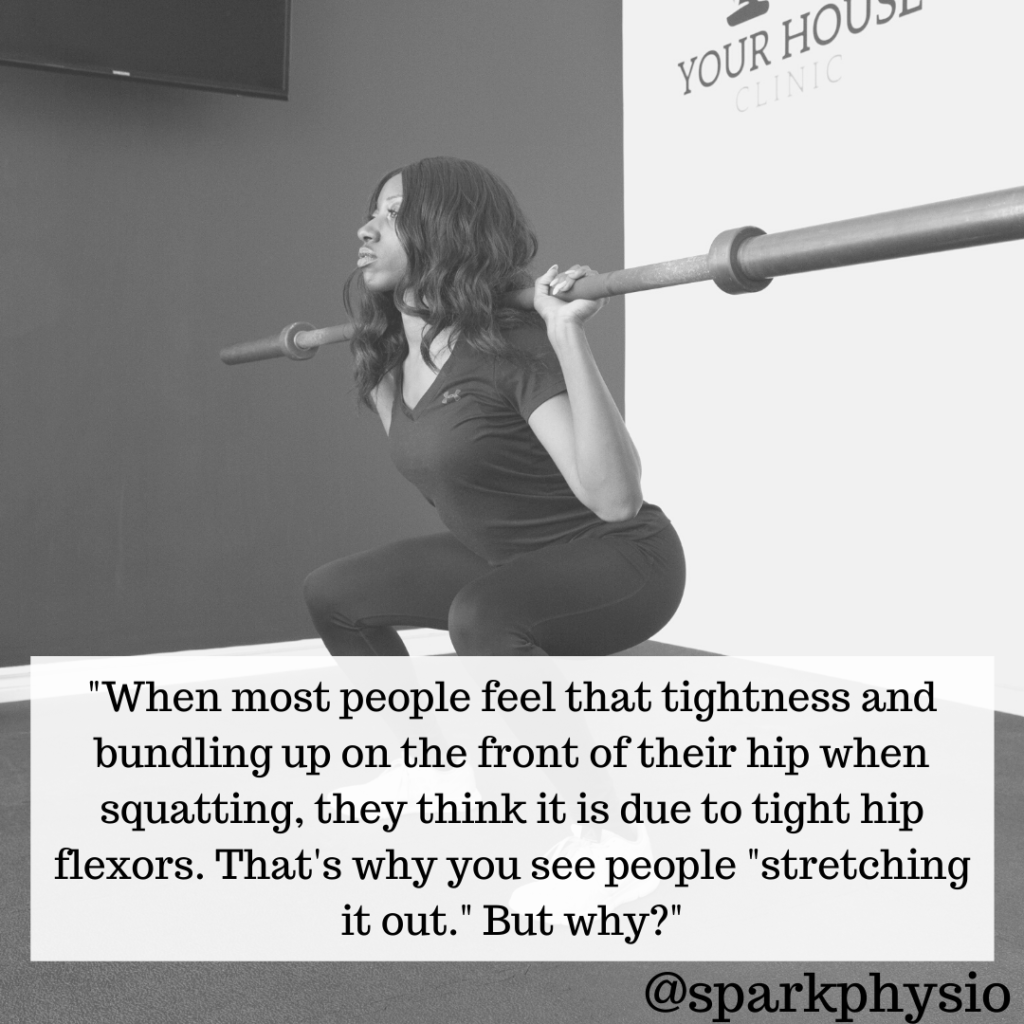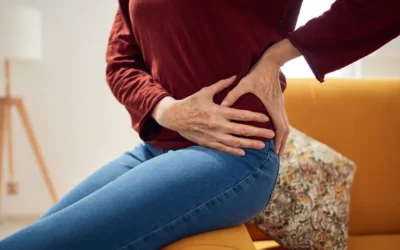
Have you ever felt hip pain when squatting? You know, the feeling of a big bundle of tightness on the front of your hip that prevents you from getting the depth you want? The kind that makes you “warm-up” for 30 minutes before your squat session begins?
This usually starts as a nuisance and you feel like you need to spend hours stretching out your hip flexors before you start your squatting. But, over the course of time, that stretch no longer helps out your hip pain and you continue to notice less depth with your squats. You may not notice it, but others in the gym and your lifting partner may notice your technique getting a little “off.”
Sound like a familiar story?
If it is, don’t worry. This sensation is very common. In fact, I have even dealt with some of this feeling myself recently.
When most people feel that tightness and bundling up on the front of their hip when squatting, they think it is due to tight hip flexors. That’s why you see people wasting their time stretching it out or trying to “release” their hip flexors on a foam roll or some sort of ball.
But, the painful anterior hip when squatting is more than likely from impingement or compression of some of the hip structures at the bottom of the squat.
Why Should You Care About The Hip Pain When Squatting?
First of all, you likely won’t be able to just “push through it” and hit your numbers you are looking for. That is the main reason why people come and see us at Spark. They are noticing increased difficulty with getting the depth they want and hitting the numbers they once did or are looking for.
Secondly, you are at an increased risk of developing a hip labral tear. If the head of the femur continues to pinch on the acetabulum (pelvis bone), then the labrum can become caught and torn.
Lastly, it could be causing some boney adaptations at the hip that are not beneficial. Our bones are resilient and tend to grow based on stresses applied to them. If you continue to put stress on the point between the femur and acetabulum, bony abnormalities may develop. This could mean developing CAM or Pincer deformities.
5 Tips To Stop The Pain At The Bottom Of A Squat:
- Modify your squat depth
- Adjust the degrees of toe-out and stance width
- Try more upright squat variations (i.e. front squat, goblet, high-bar)
- Increased ankle dorsiflexion, use Olympic lifting shoes, or plates under your heels
- Go see a qualified physical therapist to help you not only modify your training, but help get rid of the pain for good
If you have any questions, please feel free to send us a quick message below or email [email protected]
PS
If you feel like you are ready to seek the help you need and deserve, feel free to contact us to schedule your visit so we can get you out of pain and back to hitting your numbers!




